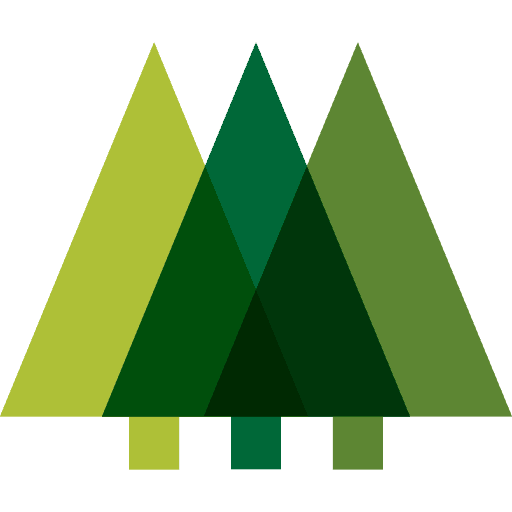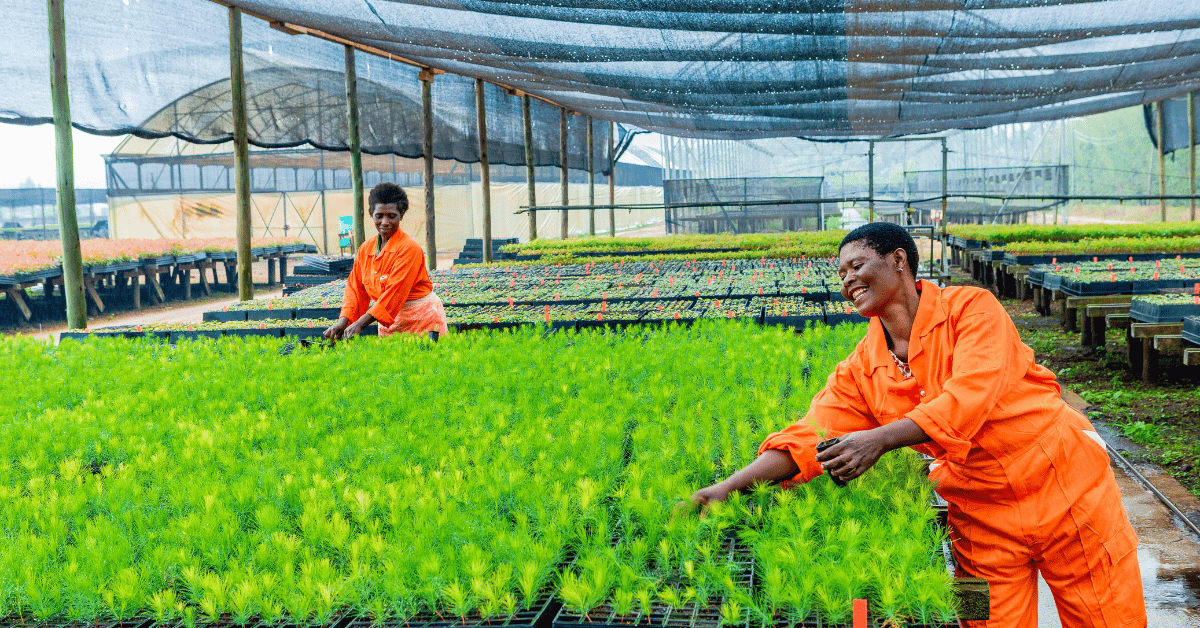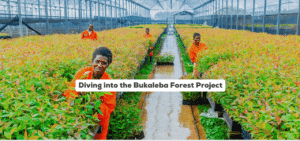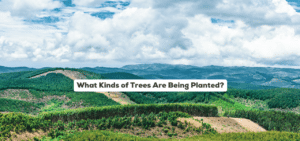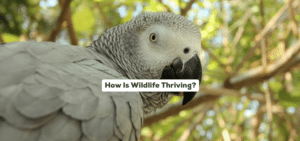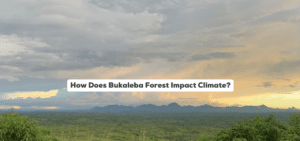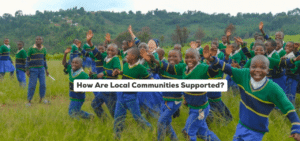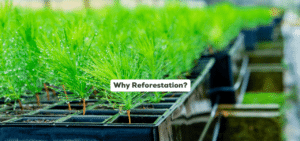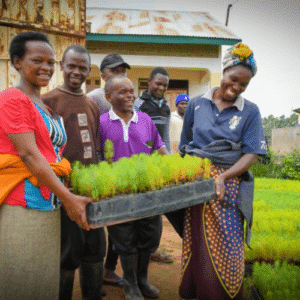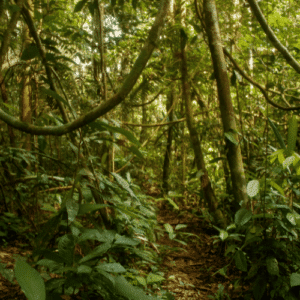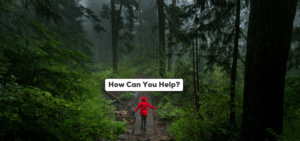Introducing Stand For Trees’ Very First Reforestation Project
🌱 We’re breaking ground! Learn more about Bukaleba Forest and why we we’re not just saving trees now – we’re planting them.
We’re thrilled to announce that the Bukaleba Forest Project marks a monumental milestone for Stand for Trees as our very first reforestation endeavor on the platform. While our past projects have focused on supporting REDD+ projects aimed at reducing emissions from deforestation and forest degradation (aka saving ancient trees from being cut down, burned, destroyed, etc.), launching the Bukaleba project signifies an exciting expansion of our conservation efforts. But before we get into exactly why we’re embracing reforestation, let us tell you more about this incredible project.
What is Bukaleba Forest All About?
Nestled in the heart of Mayuge District in Eastern Uganda, the Bukaleba Forest Project is enhancing the region’s biodiversity and contributing to global climate change mitigation through tree planting. This initiative is transforming the area of shrubland into lush, well-managed forests with exotic and indigenous tree species.
Beyond reforestation, Bukaleba is a lifeline to local communities, offering a sustainable alternative to practices like subsistence agriculture, fuel-wood collection, charcoal production, and grazing, historically contributing to deforestation. Importantly, a significant portion of carbon revenue is dedicated to community development and reinvested in Uganda, including supporting schools, healthcare initiatives, sanitation, agriculture, and more. Overall, the Bukaleba Forest Project exemplifies a comprehensive and sustainable approach, addressing environmental concerns while fostering community resilience and economic growth.
Promoting Conservation and Biodiversity
Revitalization and conservation lie at the heart of the Bukaleba Forest Project. This project is reforesting more than 2,000 hectares of previously degraded shrub and grassland along the shores of Lake Victoria in Uganda. The project plants 15 different tree species, which includes a majority of pine and eucalyptus varieties, as well as silky oak and mixed hardwoods. Proactive management of buffer zones and conservation areas ensures the protection of critical habitats for flora and fauna. And with an impressive array of wildlife (more on that directly below), it’s a haven for biodiversity.
A Safe Haven for Wildlife
The Bukaleba Forest Project has several High Conservation Value Areas (“HCVAs”) and is home to one unique, rare, critically endangered, and native species of cycad (encephalartos equatorialis). The forest reserve is home to an abundance of species, including an impressive 47 species of birds, the near threatened African buffalo, the vulnerable African prunus tree, the vervet monkey, the elusive forest leopard, and the endangered grey parrot.
Benefiting the Climate
Through the strategic planting and nurturing of trees, this initiative actively removes carbon emissions from the atmosphere. Validated and verified by Verra under the Verified Carbon Standard (VCS), the project has removed 351,909 tonnes of CO2 emissions over the last two decades, making a significant contribution to global climate change mitigation efforts. That’s equivalent to removing 83,755 gas-powered cars off the road for one year!
Empowering Local Communities
Beyond its environmental impact, the Bukaleba Forest Project is a lifeline for local communities. The project employs over 900 rural individuals and promotes conservation through tree planting and biodiversity initiatives. Additionally, over 345 women from community groups were trained on making soap, detergent, and Batiki clothes to contribute to their household income. The project also provides medical supplies, counselling, and testing services to communities to promote health and prevent the spread of communicable diseases. Drilled boreholes improve access to clean and safe drinking water which benefits over 4,000 households. Moreover, the project contributes to sustainable agricultural advancement by supporting the establishment of cooperatives and processing facilities, adding value to local crops. The provision of tree seedlings to villagers, along with training on tree planting and firefighting techniques, has increased the involvement of local people in tree plantation activities. This comprehensive approach not only revitalizes degraded areas but also bolsters community governance and infrastructure.
Why the Shift to Reforestation?
With the launch of the Bukaleba Forest Project, Stand For Trees is embarking on a new and exciting chapter in our conservation efforts. While REDD+ projects have been instrumental in protecting existing forests and preventing further loss of valuable carbon sinks, we recognize the urgent need for proactive reforestation efforts. Reforestation not only helps remove carbon from the atmosphere but also restores vital ecosystems and provides numerous benefits to local communities and biodiversity. Let’s delve deeper into the differences between reforestation carbon removal and REDD+ carbon reduction.
Reforestation Carbon Removal vs. REDD+ Carbon Reduction: Understanding the Difference
Reforestation Carbon Removal
Reforestation carbon removal involves planting trees on land that was previously deforested or degraded. This process aims to restore forest ecosystems and enhance carbon sequestration by capturing carbon dioxide from the atmosphere through photosynthesis. As trees grow, they absorb carbon dioxide and store it in their biomass and soil, effectively removing carbon from the atmosphere and storing it in living vegetation and organic matter.
In the early stages of a reforestation project, the carbon sequestration benefits may be modest as newly planted trees are still small and growing. However, as the trees mature and their biomass increases, so does their capacity to absorb and store carbon. In summary, while the benefits of carbon removal through reforestation may take time to fully manifest, the enduring growth of trees ensures a promising future for our planet’s health and resilience against climate change.
REDD+ Carbon Reduction
REDD+ (Reducing Emissions from Deforestation and Forest Degradation) is a global mechanism aimed at reducing emissions from deforestation and forest degradation in developing countries. Unlike reforestation carbon removal, which primarily focuses on restoring degraded landscapes through tree planting, REDD+ initiatives target the preservation and sustainable management of existing forests.
In contrast to the long-term trajectory of reforestation carbon removal, REDD+ offers a way to make an immediate impact in the fight against climate change. Under REDD+, countries or communities are incentivized to conserve their forests by receiving financial compensation for the carbon dioxide emissions they prevent by avoiding deforestation and degradation. This approach not only helps conserve biodiversity and protect vital ecosystems but also reduces emissions from sources associated with deforestation, such as land conversion for agriculture, logging, and infrastructure development. So in a nutshell, REDD+ stands as a vital mechanism for immediate action, incentivizing the preservation of existing forests and offering a proactive solution in the urgent fight against climate change.
Complementary Strategies
Reforestation carbon removal and REDD+ carbon reduction are complementary strategies in the broader effort to address climate change and preserve global forests. While reforestation projects focus on restoring degraded landscapes and enhancing carbon sequestration, REDD+ initiatives target the protection and sustainable management of existing forests to prevent further emissions. By integrating both approaches, we can maximize the benefits of forest conservation and tree planting, effectively reducing and removing greenhouse gas emissions, conserving biodiversity, and supporting local communities.
How Can You Help the Bukaleba Forest Project?
Help fight against climate change and deforestation by supporting reforestation of more than 2,000 hectares of previously degraded shrub and grassland along the shores of Lake Victoria in Uganda.
Your support will also uplift the social and economic well-being of the local communities reliant on the project area for their livelihoods.
You’ll receive a frame-worthy certificate in your name with your purchase.
All you need to do is visit standfortrees.org/protect-a-forest/bukaleba/.
But hurry, don’t wait! If you see this text, then we’re still running our campaign to send Stand For Trees t-shirts to lucky new Bukaleba supporters.
Together, we can make a difference. By standing for trees, we stand for biodiversity, for climate action, and for a sustainable future for generations to come. Join us in preserving the breathtaking beauty of Bukaleba Forest and ensuring that it remains a sanctuary for wildlife and a source of wonder for all.

